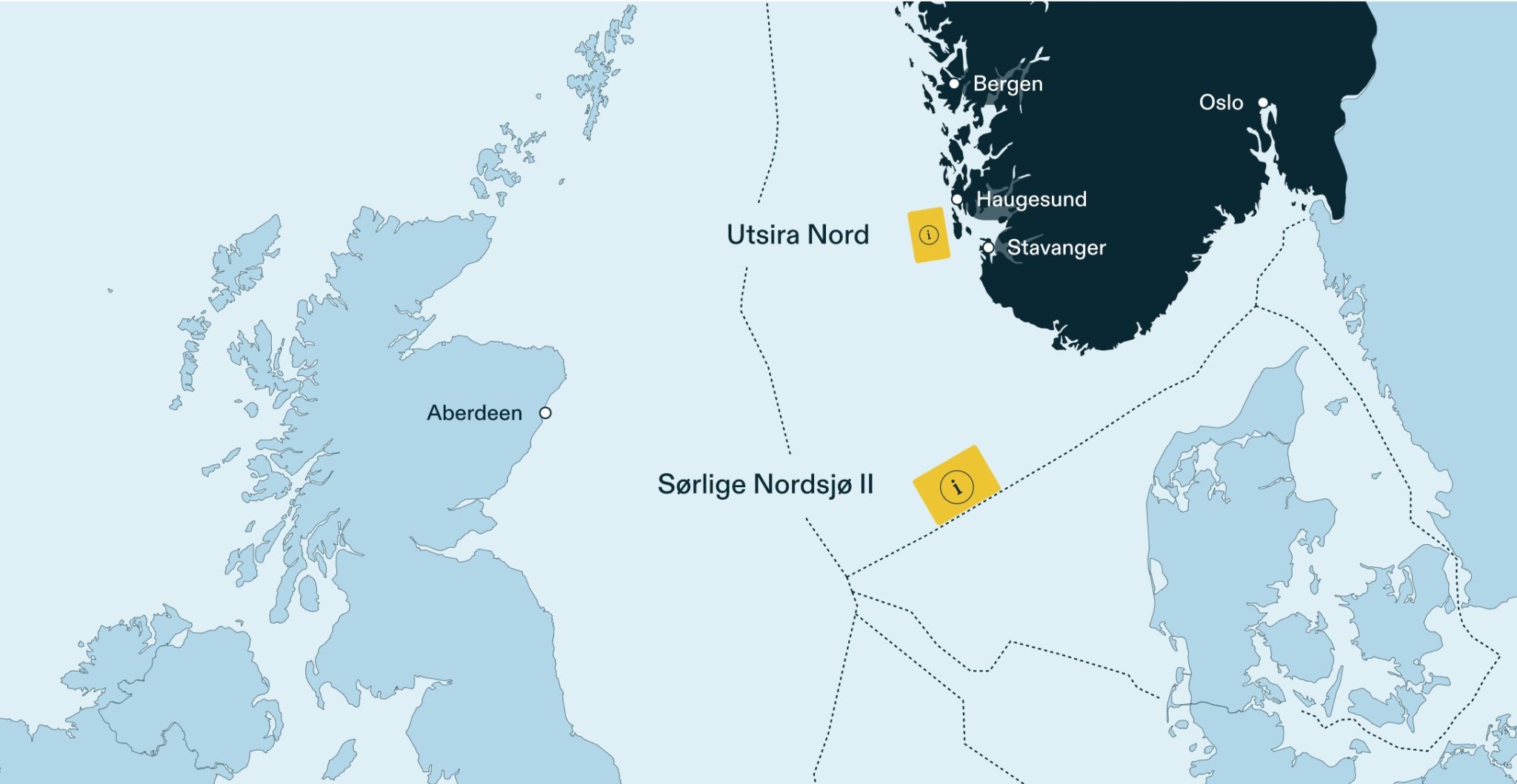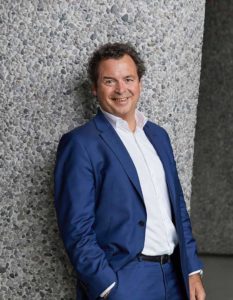Sørlige Nordsjø II and Utsira Nord: Comments to Grid Solution

The Ministry of Petroleum and Energy (MPE) has in the tender documents for the Utsira Nord (UN) and Sørlige Nordsjø II (SN II) areas, published on March 29 2023, given further clarifications in regards to the regulation of the grid connection for the opened areas. The MPE has, as expected, decided that the UN and SN II areas shall be connected to the Norwegian mainland through a production radial, that shall be planned, constructed, operated, financed and owned by the developers at the developer’s cost.
Clarifications regarding grid investment contribution, third-party access and system responsibility for the TSO
In the tender documents for UN and SN II, the MPE clarifies several uncertainties related to the regulation of the offshore grid relevant for the potential bidders in the upcoming competitions for the opened areas. However, uncertainties and topics still need clarification for the potential bidders. For SN II, the potential bidders will at least need to know what grid connection point will be applicable for SN II first phase, as well as the grid investment contribution the potential bidders will have to pay, in order to calculate its grid-related costs in their LCOE. Similarly, the potential bidders for UN need clarification on whether the grid solution will be a coordinated or distributed grid solution, what onshore grid connection point will be applicable, as well as the grid investment contribution the potential bidders will have to pay. The MPE has nevertheless stated that the applicants must be prepared for not all grid-related issues will be resolved prior to the award of the project area within SN II or prior to the deadline for submission of applications for the area on UN, respectively.
The MPE has clarified that the developers of UN and SN II first phase will have to pay a grid investment contribution according to the regulation on the control of grid operations (Nw: forskrift om kontroll av nettvirksomhet) chapter 16, in order to obtain the onshore grid connection to the Norwegian mainland. The MPE will commission Statnett (the Norwegian TSO) to review the related grid connection costs and necessary grid investments for facilitating grid connection for the offshore wind project at SN II in good time prior to the award of SN II. This will, however, for good reasons be needed prior to the commencement of the auction if the bidders shall be capable of estimating their LCOE before bidding in the auction. For UN, the MPE has not stated when such estimates will be finished. As all the investments and operational costs related to the grid solution may impact the applicant’s total cost and thus the evaluation of chance to succeed in the competition also on UN, we are of the opinion that MPE should stress to have both the grid investment contribution, and all other aspects related to the grid system clarified urgently. It should preferably not be postponed until after the award of exclusivity to the areas.
It is furthermore stated that the MPE will implement changes to the Offshore Energy Act in order to have a legal basis to instruct the offshore grid owner to facilitate third-party access. The MPE states that the offshore grid owner shall not be required to make grid investments or grid alterations to facilitate third-party access. It is the MPE’s opinion that it should be up to the developers to consider if it is rational to facilitate such third-party access (probably with the intention of being capable of recouping some of the investment and operational costs at a later stage if a third party is provided access).
The MPE furthermore confirms that it will implement necessary changes to the Offshore Energy Act in order for Statnett to implement measures in the Offshore grid connection points. This would inter alia entail that Statnett would be able to instruct the developer to stop the production at the offshore wind farm in certain situations. The MPE is also reviewing the need for regulations regarding safety and emergency preparedness, and stated that until further notice, the onshore safety and emergency preparedness requirements shall apply.
Sørlige Nordsjø II
The first phase of SN II is located 200 kilometers from the closest onshore grid connection point, and will be connected to the Norwegian onshore grid through a radial with Kvinesdal as the most likely onshore grid connection point. The developer shall, as mentioned above, be responsible for the planning, construction, financing and operation of the radial to the onshore grid connection point. The distance to the onshore grid, necessitates an HVDC converter station. The converter station constitutes a major investment for the developer, which explains why there originally was a strict requirement for experience in the construction and operation of an HVDC grid in the prequalification criteria for SN II. This requirement has, however, been softened somewhat in the final prequalification criteria, but still, there is a requirement for experience with grid systems of similar complexity and size, and the applicants must document how they will ensure sufficient HVDC competence to execute and operate the grid part of the project.
The MPE has opened for 1500 MW capacity from the wind farm, but the onshore grid connection will have a maximum capacity of 1400 MW. It may therefore be of interest for the developer to look into the possibilities for a direct grid connection to a third-party end user for being able to also exploit the surplus capacity. This may, of course, also facilitate reserve capacity for future third-party access to the radial.
The MPE has not conducted any surveys of the seabed for the routing of the offshore production radial and has stated that the developer will be responsible for such surveys.
The radial shall be owned and operated by the developer for as long as the radial only serves the offshore wind farm, or a small number of other producers. If the radial at a later stage ends up serving several producers, it may be reclassified as a transmission grid, requiring it to be sold to Statnett, since Statnett is the only legal owner of transmission grids. The terms and conditions for a sale of the radial during the support period (i.e. for as long as the Contract for Difference (CfD) applies), will be regulated in the CfD. The CfD, and hence the details of that arrangement is not yet published.
The MPE has, under reference to a letter from ConocoPhillips, opened for the possibility that SN II may be used for the electrification of the Ekofisk field, if the developer wishes to do so. MPE has, however, stated that potential electrification of the Ekofisk field from SN II first phase would not entail changes to the maximum allowed capacity in the project area or the right to support under the CfD, and will be conditional upon the developer agreeing with the owners of Ekofisk how to do this. In the proposal for the CfD and state support scheme for SN II to the Parliament MPE addresses this opportunity to connect directly to other end users in more general terms, and states that the developer will be allowed such connection at his own discretion.
We expect that further clarifications regarding the grid solution for SN II will be given prior to the award of the first phase of SN II. It is essential for the bidders to have the necessary clarifications regarding the onshore grid connection point and the amount of grid investment contribution payable for the developer, prior to the auction for SN II, in order to calculate their LCOE as a basis for the bidding round. However, the MPE has stated that not necessarily all grid-related issues will be resolved by the time of the award of the first phase of SN II.
Utsira Nord
The MPE has decided that the offshore wind farms at UN shall be connected to the onshore grid through an alternating current (AC) grid. The final grid solution for UN is still in the making, and the MPE has stated that further project relevant information will be published prior to the application deadline for UN (September 1 2023). Unlike SN II, the MPE has not given any signal thus far, as to whether the offshore grid connected to UN could be reclassified and transferred to Statnett at a future point in time. However, we assume that this may be a possibility also for UN that will be addressed at some future point in time. However, as not all three successful winners of an area will be offered state support through an CfD, this may have to be addressed and regulated somewhat differently from how it will be done on SN II.
Statnett is responsible for the designation of an onshore grid connection point and has suggested two possible grid solutions. The primary recommendation from Statnett is a coordinated grid solution, with a grid connection in the new Karmøy substation. In the case of a coordinated grid solution, the offshore wind projects at UN will have a joint landing solution with a joint grid. The MPE has stated that several considerations may call for a coordinated grid solution, and has instructed Statnett to review the pros and cons of the possible grid solutions.
In the alternative grid solution, each developer will plan, construct and operate its own landing solution with its own radial (distributed grid solution). In the case of a distributed grid solution, several grid connection points may be relevant in addition to Karmøy substation, such as the new Gismark substation or Spanne substation.
A distributed grid solution and a coordinated grid solution is illustrated below, based on a model from the Energy Regulatory Authority (RME) in its report 11/2022:


The developers shall plan, construct, finance and operate the production radials from the offshore wind farms to the onshore grid, either through a distributed grid solution or through a coordinated grid solution. As a part of the competition for the UN subareas, the developers will therefore be assessed on competence and experience in planning, construction and operation of electricity grids. The tender for UN sets out a requirement for general experience with an electricity grid of a minimum of 66 kV, but it is stated that the experience will be given a higher score if it is more relevant to the offshore grid solution applicable for UN, hereunder if the experience relates to grid and substations based on AC-technology. The requirement for experience with a grid is thus less strict in the competition for UN than the equivalent competition for SN II first phase.
The MPE has stressed that not all conditions regarding the grid solution for UN will be known to the developers at the application deadline on September 1 2023. The potential bidders thus risk applying for a subarea without knowing what the grid solution and grid costs for their projects will be. Applicants should, however, as a minimum, be able to expect that the conditions will be clarified in good time before the subsequent competition for support schemes for the offshore wind projects within UN (expected in 2024).

